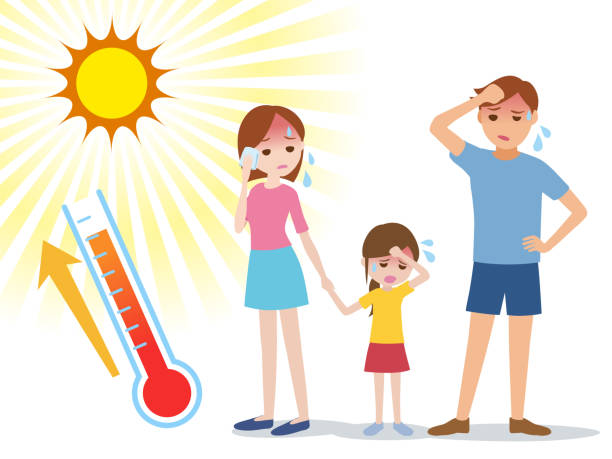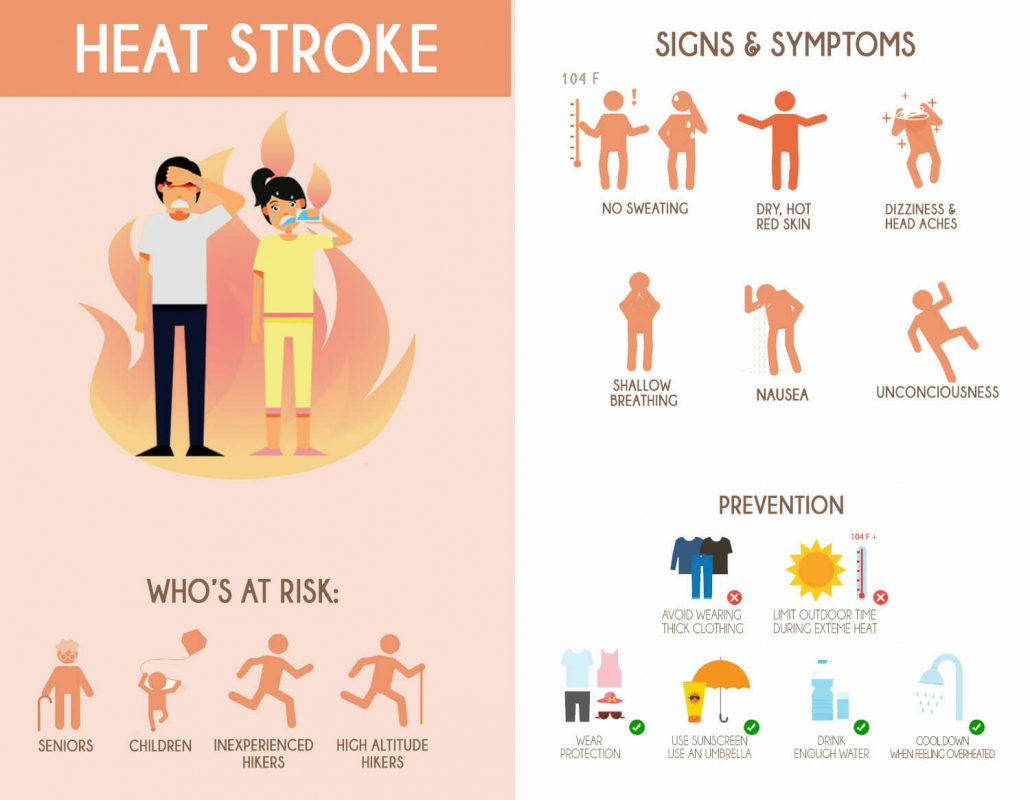Recognising and Preventing Heat Stroke while Participating in Sport
When using the word heat stroke, many people think that it is interchangeable with heat exhaustion. The truth is, heat stroke happens once heat exhaustion has already been reached and untreated for some time. Both conditions are quite serious and steps should be taken to prevent the risk of heat stroke and heat exhaustion.
Since heat exhaustion leads to heat stroke, this article will discuss both conditions, focusing on preventing heat exhaustion to avoid heat stroke. Since heat stroke would not occur without heat exhaustion first occurring, it is important to know the signs of and care for heat exhaustion to avoid ever having heat stroke.
The following will discuss how and why heat exhaustion and heat stroke occur, how to recognise these conditions, how to prevent them from happening, and which groups are most at risk for heat exhaustion and heat stroke. By understanding heat exhaustion and how to treat it, it will be much easier to avoid the life-threatening condition of heat stroke.
Preventing Heat Exhaustion
When doing any strenuous outdoor activity in hot weather, the risk of heat exhaustion and heat stroke is an ever-present threat. However, those who are prepared for their outdoor activities and are aware of how to prevent heat exhaustion will have a far better chance of completing it without suffering from heat exhaustion or heat stroke. Prevention is the best way to avoid heat exhaustion and heat stroke altogether, so taking these important steps to prepare.
Avoid High Temperatures
Rather than undertaking sport during the afternoon, players should try and participate in the early morning hours or wait until the evening during hot days. This will decrease the amount of sun exposure and the temperature during will be lower, too.
Drink Plenty of Water
Hydration goes hand in hand with staying cool. As bodies lose water through sweating, it must be replenished with water. It’s a great idea to have at least a gallon of water whist out and undertaking anything active.
Eat High Protein Snacks
It is hard for the body to absorb water if it doesn’t have any food or extra energy to absorb it with. Therefore, high protein snacks are essential, especially during hot weather. Things like nuts, dried fruits, and protein bars should do the trick.
Avoid Sun Exposure
Keeping the skin covered from the sun, staying in the shade, wearing a wide brimmed hat, and applying sunscreen regularly are all great ways to avoid heat exhaustion. Once the skin is sunburned, it is much harder for the body to keep itself cool.
Don’t Overdo It
No matter what the activity, it is important for people to know their limits and try their best not to push themselves too hard. By coaches planning sessions that are too strenuous, or choosing to extend the session at the last minute, players and coaches put themselves at a greater risk of heat exhaustion and, ultimately, heat stroke.
Recognising Heat Exhaustion
Even with careful preventative measures, heat exhaustion can still happen. There are a few key signs that are indicators of heat exhaustion and heat stroke. It is important to keep in mind that the signs of heat exhaustion will occur first, followed by heat stroke if the exhaustion is not treated properly. Anyone experiencing any of these symptoms should get to a cooler location and follow the treatment plan, which will be discussed next.
Signs of Heat Exhaustion
Extreme Sweating
One of the first signs of heat exhaustion is sweating that is unstoppable and perfuse. Soaking through clothing and sweat running down the face are signs that the amount of sweat is linked to heat exhaustion.
Nausea or Light-headedness
Light-headedness that alters the state of mind or intense nausea, it can be assumed that heat exhaustion is the culprit during hot weather.
Abnormal Heartbeat
If the heart speeds up, slows down and becomes faint, or is irregular with palpitations, heat exhaustion is likely being suffered.
Cold Chills
Much like the feeling of cold sweats during the flu, cold chills come on strong with heat exhaustion.
Unquenchable Thirst
Feeling extremely thirsty and not being able to curb the thirst by drinking water slowly is a sign that heat exhaustion has begun.
Muscle Cramps
Cramping muscles are a serious sign of heat exhaustion. These cramps can make it difficult to continue training or playing.
Signs of Heat Stroke
Symptoms Above Continue for Thirty Minutes
If any of the symptoms above continue after thirty minutes despite treatment, heat stroke may be occurring.
Unconsciousness
Losing consciousness occurs as the body’s way to stop movement and allow the body to cool down to protect the brain and vital organs. This is a very dangerous sign of heat stroke.
Some other signs of heat stroke include:
Red, Hot Skin
Lack of Sweat
Shallow Breathing
Delirium
Note: By the time symptoms of heat exhaustion turn into heat stroke, emergency action should be taken. Heat stroke is a life-threatening condition and should be treated as such.
Treating Heat Exhaustion
When signs of heat exhaustion begin, it is imperative that the symptoms are treated promptly. Symptoms that are left untreated will quickly develop into heat stroke, which can be deadly. Using these treatments and calling off the game or training as soon as heat exhaustion hits are the best ways to ensure everyone keeps safe.
Head to the Shade
The first step in cooling the body is to get into the shade. Heading under any cover, below a tree, or any other safe and shady spot is very important. For extra cooling, a shaded spot with a light breeze is best.
Remove Restrictive Clothing
While it is best to have skin covered to avoid heat exhaustion, if it has already occurred it is best to remove restrictive clothing to allow the air and breeze to get to the skin. This should only be done once in the shade, not where the sun can do further damage to the skin.
Submerge in Water
In the wild, animals can be seen sinking into the water on hot days. They aren’t doing this for fun, it is truly one of the best ways to cool the body. The cool water helps to lower body temperature from the outside in, which speeds up recovery from heat exhaustion.
Take a Break
While waiting for the symptoms of heat exhaustion to pass, it is important to rest for a long time. Finding a shady spot, sitting or lying down, getting comfortable, and slowly sipping water is what a break to treat heat exhaustion should look like.
Recognizing that the sun and high temperatures can be a serious threat is the first step in avoiding heat exhaustion and, ultimately, heat stroke. By following these tips for prevention, recognition, and treatment of heat exhaustion and heat stroke coaches, parents and players will be able to enjoy the outdoors safely and comfortably.





